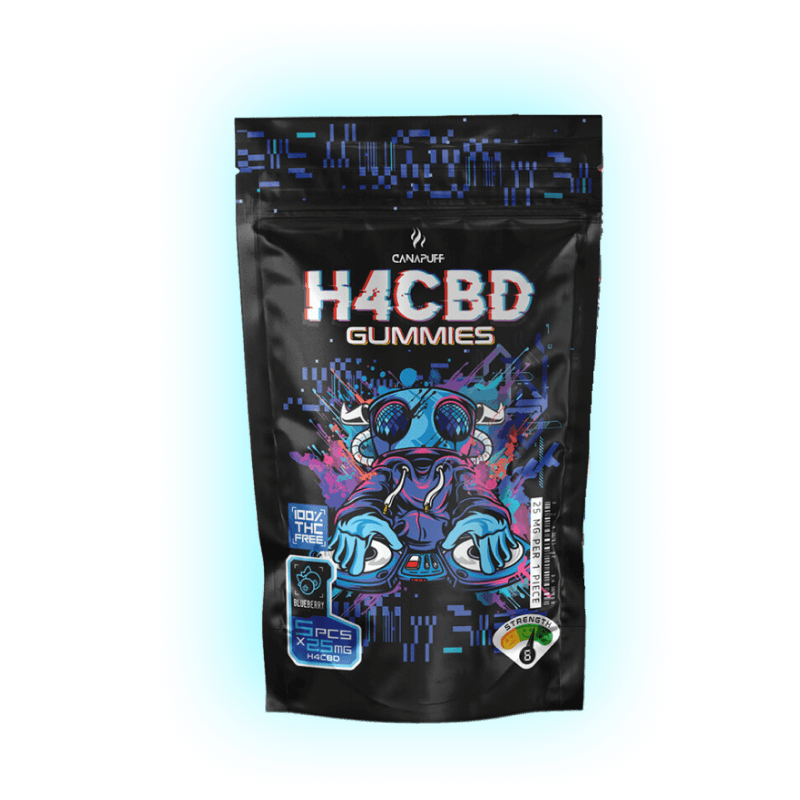10-OH-HHC vs THC: Comparison of effects

Inhaltsverzeichnis: 10-OH-HHC vs THC: Comparison of effects
New developments and discoveries are constantly being made in the field of cannabinoids. Two of the most interesting compounds are 10-OH-HHC and THC. Both have unique properties and effects that make them attractive for different areas of application. In this blog post, we look at the differences and similarities between these two cannabinoids to give you a sound understanding.
What is 10-OH-HHC?
10-OH-HHC, or 10-hydroxy-hexahydrocannabinol, is a relatively new cannabinoid derived from HHC (hexahydrocannabinol). It is characterized by a mild psychoactive effect and shows promising properties in pain therapy and anxiety management. Compared to THC, 10-OH-HHC is less intense, making it an interesting alternative for users who want to experience the benefits of cannabinoids without a strong high.
Basics of 10-OH-HHC
To fully understand the differences and similarities between 10-OH-HHC and THC, it's important to know the basics of 10-OH-HHC. This includes a deeper understanding of its chemical structure and the processes by which it is obtained.
The chemistry behind 10-OH-HHC
10-OH-HHC is a hydrogenated derivative of THC. It is produced by the oxidation of HHC (hexahydrocannabinol), which means that a hydrogen molecule is added to increase its stability and bioavailability. This chemical modification gives 10-OH-HHC its unique properties, including a milder psychoactive effect and potentially stronger pain-relieving effects.
Extraction and production of 10-OH-HHC
The extraction of 10-OH-HHC is usually done through chemical processes in which THC is hydrogenated and then oxidized. This process requires precise control and expertise to ensure a high quality and pure product. The production of 10-OH-HHC is complex and requires specialized equipment and knowledge to achieve the desired purity and potency.
Basics of THC (tetrahydrocannabinol)
THC, or tetrahydrocannabinol, is one of the most well-known and well-researched cannabinoids. It is mainly responsible for the psychoactive effects associated with the use of cannabis. In this section, the chemical basis of THC and its extraction and production are explained in detail.
The chemistry behind THC
THC is a cannabinoid found in the flowers of the cannabis plant. Chemically, it is a phytocannabinoid that is extracted from the cannabis plant. The structure of THC contains a phenol group and a methyl group attached to a cyclohexane ring. This chemical composition allows THC to bind to the cannabinoid receptors in the human brain, resulting in the typical psychoactive effects.
Extraction and production of THC
THC is obtained by extracting it from the cannabis plant. This can be done using various methods such as CO2 extraction, solvent extraction or mechanical processes. In CO2 extraction, carbon dioxide is used under high pressure to dissolve THC from the plant mass. This method is considered particularly safe and efficient as it yields a pure product without harmful residues.
Comparison of the effects of 10-OH-HHC and THC
The effects of 10-OH-HHC and THC can be different, although both cannabinoids have similar chemical structures. In this section, we compare the psychoactive effects and medicinal uses of both substances.
Psychoactive effects of 10-OH-HHC vs THC
THC is known for its strong psychoactive effects, which can produce feelings of euphoria and altered perception. These effects are triggered by the binding of THC to the CB1 receptors in the brain. In comparison, 10-OH-HHC has a much milder psychoactive effect. Users report a gentler, clearer effect that is less intense than that of THC. This makes 10-OH-HHC an attractive option for those who want to experience the benefits of cannabinoids without a strong high.
Medical uses of 10-OH-HHC and THC in comparison
THC is commonly used in pain management, nausea and loss of appetite. It has been shown to be effective in relieving chronic pain and improving the quality of life of patients with serious medical conditions. 10-OH-HHC, on the other hand, shows promising results in pain relief and anxiety reduction, although research in this area is still in its infancy. Initial studies and field reports suggest that 10-OH-HHC may cause fewer side effects such as anxiety and paranoia, making it a potentially safer alternative to THC.
Side effects and risks of 10-OH-HHC and THC
Studying the side effects and risks of cannabinoids is crucial to making informed decisions about their use. Both 10-OH-HHC and THC have specific side effects that users should be aware of. This section looks at the side effects and risks of these two substances in detail.
Side effects of 10-OH-HHC
10-OH-HHC is a relatively new cannabinoid, and research into its side effects is still in its infancy. However, initial reports and studies suggest that 10-OH-HHC has less intense psychoactive effects than THC. Possible side effects include:
- Mild psychoactive effects: While 10-OH-HHC is less intense, it can still produce mild psychoactive effects, such as mild drowsiness or a feeling of relaxation.
- Drowsiness: Some users report increased drowsiness or sleepiness after taking 10-OH-HHC.
- Dry mouth and eyes: Similar to other cannabinoids, 10-OH-HHC can cause dry mouth and eyes.
The long-term effects of 10-OH-HHC have not yet been fully researched, so caution is advised, especially with regular use.
Side effects of THC
THC is the most well-researched cannabinoid, and its side effects are well documented. The most common side effects include:
- Psychoactive effects: THC can have strong psychoactive effects, including euphoria, altered perception of time and space, and hallucinations at high doses.
- Anxiety and paranoia: Some users experience anxiety or paranoia, especially at high doses or in people who are prone to mental disorders.
- Short-term memory impairment: THC can impair short-term memory and reduce the ability to concentrate.
- Dry mouth and eyes: Again, dry mouth and dry eyes are common side effects.
Long-term use of THC can lead to dependence and other health problems, which is why responsible use is important.
Conclusion: 10-OH-HHC vs THC
A comprehensive understanding of the differences between 10-OH-HHC and THC is crucial to choosing the appropriate substance for individual needs. Both cannabinoids have their own benefits and potential risks.
Summary of the differences between 10-OH-HHC and THC
10-OH-HHC and THC differ in their chemical structure and effects. While THC is known for its strong psychoactive effects, 10-OH-HHC offers a milder alternative with less intense psychoactive effects. THC is commonly used in medical therapy, particularly for pain and nausea, while 10-OH-HHC is of interest due to its potentially lower side effects and sedative effects.
Future perspectives and research on 10-OH-HHC and THC
Research on 10-OH-HHC is still in its infancy, but initial results are promising. Future studies will be necessary to better understand the full potential and safety of 10-OH-HHC. THC, on the other hand, remains a focus of cannabinoid research, and new applications and therapeutic methods are continually being explored. Both substances have the potential to play important roles in medicine and beyond.










